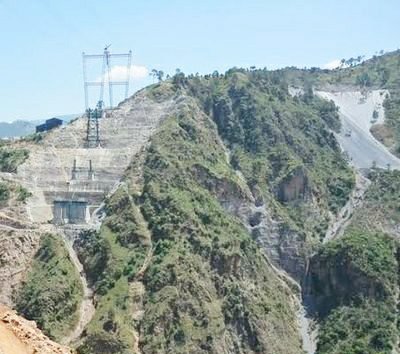Why the Option of Building the Kashmir Rail Link on Meter Gauge Should Have Been Considered
Compared to the Himalayas, the other main mountain ranges on earth are older and generally more stable. These mountains have steep slopes of bare rocks but quite stable.
In contrast, in Himalayas what you see on the slopes is more likely to be young deposits of rock fragments which have come down from higher up the slope by the process of mass wasting, which includes landslides.
Even solid rock formations are likely to be composed of highly crushed rocks.
For example, the rock formations on which foundations of the Chenab Bridge standing is highly jointed and crushed dolomite.
The Sreedharan Committee report contains a detailed discussion on the stability issues of the Chenab Bridge and other large bridges and tunnels along the geological fault lines.
Due to the limited stability of slopes, only narrow gauge lines (Kalka- Shimla & Siliguri-Darjeeling lines) were built in Himalayas before Railway Board decided about 20 years ago to build all lines on Broad Gauge, that too with an unusually flat gradient of 1 in 100.
One of the options for the rail link to Kashmir that should have been considered was to build the line on Meter Gauge, but this didn’t happen.
It is an important fact that many of the long important lines in the Andes, the Alps and in the mountains of south – east Asia and Africa are meter Gauge lines.
Meter Gauge is advantageous because of the following main factors:
- Steeper gradient up to 1 in 15 and sharp curvature of up to 15 degrees and yet good speed of 60 to 80 kmph and enough capacity to meet demand on a mountain railway.
-
Smaller coaches, wagons etc and reduced loading. So tunnels have smaller cross section and bridges impose less pressure on the slopes.
The Broad Gauge alignment which suggested for the Kashmir Rail Link avoids slopes to a very large extent to secure stability and safety for the line.
There are only six medium size bridges, each at the bottom of valleys between ridges and none is up the slope.
Alok Kumar Verma, a retired IRSE says, “if I had the freedom to adopt the Meter Gauge, I could have given an alignment with cost of construction about half of the Broad Gauge alignment and route length shorter by about 20%”.
Why the Option of Building the Kashmir Rail Link on Meter Gauge Should Have Been Considered pic.twitter.com/nh2nAwDguF
— Alok Kumar Verma, IRSE (Retd.) (@trains_are_best) December 13, 2020


